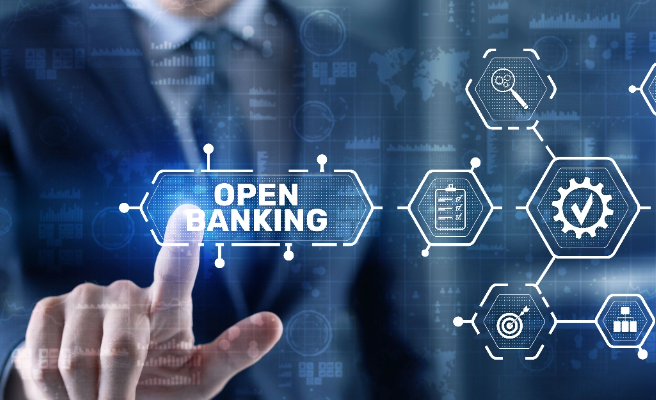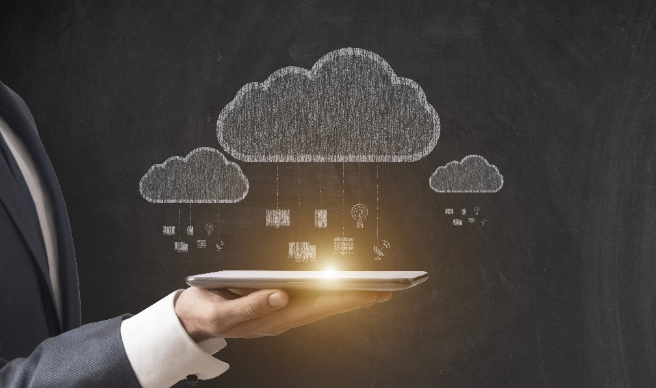Banking Technology Radar 2023
- An LTIMindtree Crystal Report
 [contact-form-7 id="1678" title="Reach us"]
[contact-form-7 id="1678" title="Reach us"]- An LTIMindtree Crystal Report
The world of banking is rapidly evolving and embracing new technologies. By adopting AI, analytics, blockchain, IoT, cloud, and quantum computing, banks can provide efficient and cost-effective services to their customers. Staying ahead of technological trends is critical for any financial organisation looking to remain competitive.
Banking Technology Radar 2023 - An LTIMindtree Crystal Report acts as a guide for the banking industry, providing a roadmap for future IT strategies. The report offers a comprehensive view of the latest transformative technologies shaping the banking landscape. It presents 63 trend elements across four segments, ranging from architecture, cloud, and data to digital. It is rated based on three parameters - adoption phase, horizon, and application scope.
The report comprises three horizons, each representing the length of time between the emergence of a new trend and its adoption by the mainstream market.

Banking-as-a-Service (BaaS) has arrived and is poised to lead the future of financial services by offering API-led, transparent, and customer-centric alternatives. BaaS provides banks with simplified compliance, speed, security, and cost efficiencies, but it’s worth noting that many banks still rely on legacy core and product platforms. Banks can deploy cloud-based digital solutions using microservices through platforms to bridge this gap and extend their products and components. As the financial industry evolves, BaaS and platform solutions will play a pivotal role in meeting customers’ needs and driving success.
Learn More
Embracing AI and digital innovation at scale is essential for banks to maintain their competitive edge. Through AI and machine learning, financial institutions can utilize predictive analytics, anomaly detection, and shared learning models to bolster system stability, identify fraud, and offer top-notch customer-centric experiences. The advantages of adopting these technologies are self-evident, making it a key consideration for banks that wish to stay ahead of the curve.

The digital lending landscape is in flux as customer demands evolve and disruptive technologies emerge, compelling banks to reassess their regulatory and compliance policies. Obtaining a loan was traditionally a complicated process, with extensive paperwork, slow approvals, and limited credit options presenting obstacles for customers. But with technology integrated into banking and financial services, loan applications can now be processed in minutes, dramatically streamlining the digitized lending process and paving the way for new trends in 2023 and beyond. Banks must embrace the future of lending to remain competitive!

Tokenization is crucial for securing sensitive data while preserving its utility, which is vital for a safe and secure digital future. It can significantly improve security measures, lower operational costs, and enhance the overall customer experience, providing businesses with a competitive advantage. A survey by the PCI Security Standards Council found that 60% of merchants and 44% of banks use tokenization to protect their customers’ payment card data. This highlights tokenization’s importance as a fundamental resource for businesses striving to maintain a secure and competitive position in the digital landscape.
Learn More
Banking of Things simplifies account opening, management, and transactions by integrating devices with financial institutions. Despite being in its early stages, there is substantial interest and investment in this field. The technology offers customized services, biometric authentication, and real-time fraud detection, improving convenience, accessibility, and security. However, data privacy and security are still major concerns that must be addressed as Banking of Things advances.

The adoption of cloud technology is critical to providing advanced buying experiences that are essential for all businesses to succeed. Cloud migration opens opportunities for innovation within the payment ecosystem. However, cloud solution providers must continually address data security threats as a crucial aspect of their service offering.

Open banking APIs enable financial services and personal data integration across different devices through open-source software and network protocols. A crucial advantage of this technology is increased competition, which results in a broader range of financial products and services. The global adoption of open banking services is expected to double between 2022 and 2027.
Learn More
Cloud sustainability promotes environmental sustainability and minimizes the banking industry’s carbon footprint by using cloud computing technology. This can be achieved through energy-efficient hardware, renewable energy sources, and workload optimization. Cloud providers must adopt a transparent climate strategy and roadmap due to increasing pressure. Carbon emissions from hyperscale cloud services are a top criterion for choosing cloud services.

Knowledge graphs and high-performance computing (HPC) are facilitating the use of AI on large datasets, with unstructured data growing at an average annual rate of 23%. Graph Neural Networks (GNN) are advanced machine learning techniques deployed for real-time fraud detection. By analyzing interconnected entities such as customers, accounts, and transactions, GNNs can identify fraudulent activity in the banking and financial industry.
Our use of Cookies
We use necessary cookies to make our site work. We'd also like to set optional analytics cookies to help us improve it. We won't set optional cookies unless you enable them. Using this tool will set a cookie on your device to remember your preferences.
For more detailed information about the cookies we use, see our Cookies page.
Strictly Necessary Cookies
Strictly necessary cookies are those that are essential for our sites to work in the way you have requested. You may disable these by changing your browser settings, but this may affect how the website functions.
For more detailed information about the cookies we use, see our Cookies page.
Performance/Analytics Cookies
Performance cookies, often called analytics cookies, collect data from visitors to our sites on a unique, but anonymous basis. The results are reported to us as aggregate numbers and trends. LTI allows third-parties to set performance cookies. We rely on reports to understand our audiences, and improve how our websites work.
Functional Cookies
We may use site performance cookies to remember your preferences for operational settings on our websites, so as to save you the trouble to reset the preferences every time you visit. For example, the cookie may recognize optimum video streaming speeds, or volume settings, or the order in which you look at comments to a posting on one of our forums. These cookies do not identify you as an individual and we don’t associate the resulting information with a cookie that does.
For more detailed information about the cookies we use, see our Cookies page.
Social Media Cookie
If you use social media or other third-party credentials to log in to our sites, then that other organization may set a cookie that allows that company to recognize you. The social media organization may use that cookie for its own purposes. The Social Media Organization may also show you ads and content from us when you visit its websites.
For more detailed information about the cookies we use, see our Cookies page.
Targeting/Advertising Cookies
We use tracking and targeting cookies, or ask other companies to do so on our behalf, to send you emails and show you online advertising, which meet your business and professional interests. If you have registered on our websites, we may send you emails, tailored to reflect the interests you have shown during your visits.
For more detailed information about the cookies we use, see our Cookies page.
